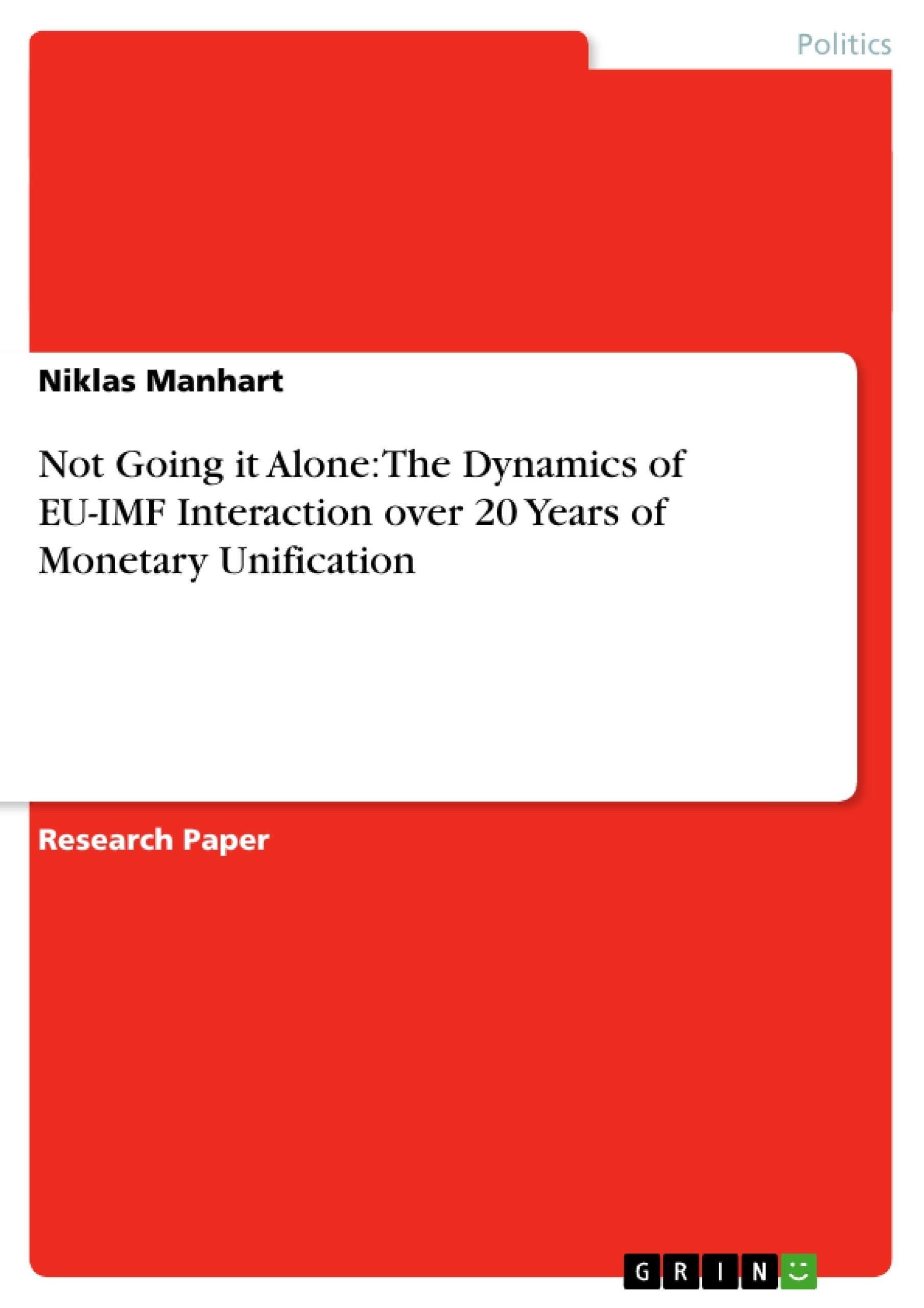Excerpt
Table of contents
1.Introduction
2. Who interacts between the EU and the IMF?
3. Channels of EU-IMF interaction
3.1 Institutional interaction
Before EMU (1945 to 1989)
Stage one and two of EMU (1990 to 1998)
Stage three of EMU (1999 to 2006)
Financial and sovereign-debt crisis (2007 to 2013)
Summary
3.2 Functional interaction
Functional interaction: surveillance
Functional interaction: lending
Functional interaction: technical assistance
Summary
4. References
1. Introduction
In recent years, the International Monetary Fund (IMF) has become deeply entrenched in Europe’s political landscape. The last weeks alone have seen the IMF signing off on Ireland’s latest programme review, backing the European Central Bank’s (ECB) interest rate cut and urging the euro area to speed up the establishment of a banking union.[1] Yet, the Fund’s role remains controversial. Justice Commissioner Reding appealed for the IMF’s retreat from Europe because “fundamental decisions, for example on whether to fire tens of thousands of public employees, should not be taken behind closed doors”.[2] The Fund’s influence on the European Union (EU) has grown to a point that parliamentarians in the European Parliament (EP) have called for an inquiry into its involvement in the ‘Troika’, the enhanced cooperation with ECB and European Commission over the euro rescue.[3] However, this has not always been the case. During the crisis in the European Exchange Rate Mechanism (ERM) in 1992/1993, the major European countries “did not view the IMF as a necessary or valued source of financial advice” (Boughton 2012, p.174) – even “aggressively excluding the IMF from any role in their discussions” (Mussa 2008, p.2). By now, the relationship between the EU and the IMF has changed fundamentally, raising important questions about the efficiency and legitimacy of decision-making in the EU.
This paper assesses EU-IMF interaction over the course of European monetary unification. Thereby, it adds to a growing body of literature on the external dimension of EU policy-making which, so far, has mainly focused on the United Nations (UN) and the World Trade Organization (WTO), while the IMF has received only limited attention.[4] As a first step of such a project, this paper addresses the following question: how have EU-IMF relations changed over the last 20 years? First, the paper asks who acts in EU-IMF relations. It finds that member states remain the primary, but not the only actors. Second, it provides a descriptive account of EU-IMF relations in the observed period. In doing so, the paper seeks to operationalize the concept of ‘interaction’ by looking at both its institutional and functional dimension. Anecdotal evidence suggests that institutional and functional interaction have not developed in parallel, i.e. that the increase in day-to-day engagement between the IMF and the EU through the activities of surveillance, lending and technical assistance has not corresponded to formalization of EU-Fund relations. In terms of the timescale, the paper roughly follows the stages of European monetary unification, although earlier developments are also taken into account.
[...]
[1] Wall Street Journal, “Ireland Passes Final Review By Troika”, 7 November 2013; Reuters, “IMF cheers ECB rate cut, sees slack in euro zone” 7 November 2013; Reuters, “EU must speed up banking union to gain trust, IMF says”, 9 October 2013.
[2] Deutsche Welle, “Troika Tensions Heat Up”, 6 November 2013.
[3] EUObserver, “EU Parliament To Probe Bailout Troikas”, 28 October 2013.
[4] Notable exceptions include the EU’s representation on the IMF’s Executive Board (Lieb et al. 2011) and the reform of the IMF quota system (Bini Smaghi 2006a; Wouters & Van Kerckhoven 2013). Recent single issue studies on EU-IMF interaction focus on emergency lending (Seitz & Jost 2012), the IMF’s involvement in Eastern Europe (Lütz & Kranke 2013) and the early years of the Economic and Monetary Union (Broome 2013)
- Quote paper
- M.A. Niklas Manhart (Author), 2014, Not Going it Alone: The Dynamics of EU-IMF Interaction over 20 Years of Monetary Unification, Munich, GRIN Verlag, https://www.grin.com/document/271665
Publish now - it's free






















Comments